Dessert Fruit

Are there any healthy French dessert options ?
The article discusses the various healthy options for French desserts. It mentions fruit-based desserts like Tarte Tatin and Clafoutis, which use fresh fruits as the main ingredient, providing natural sweetness and fiber. It also suggests using whole wheat flour or almond flour to make these desserts healthier. The article further introduces nut-based desserts such as flourless chocolate cake and walnut and almond cake, which are low in carbohydrates and high in healthy fats and protein. Finally, it concludes that there are many healthy French dessert options available that allow you to indulge in something sweet without compromising your health goals.
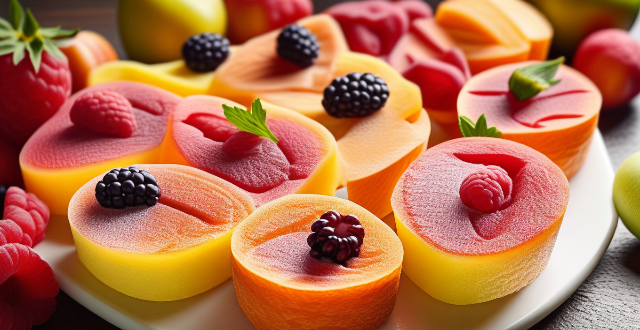
How does a traditional tarte Tatin differ from other fruit tarts ?
Tarte Tatin is a classic French dessert that differs from other fruit tarts in several ways. It is prepared by cooking the fruits first, which releases their natural juices and creates a rich, syrupy filling. The tart is then baked upside down, resulting in a beautiful presentation with caramelized fruits on top and a flaky crust on the bottom. The flavor profile of Tarte Tatin is also unique, with deep, complex flavors created by the caramelization process and a buttery crust that absorbs some of the fruit flavors. Finally, the texture of Tarte Tatin is delicate and moist, with a flaky crust and juicy fruits that create a satisfying contrast. Overall, Tarte Tatin stands out as a delicious and visually stunning dessert that is sure to delight anyone who tries it.

What is the history behind the French dessert, éclair ?
The éclair is a classic French dessert with a rich history dating back to the early 19th century. Originally known as "petites patisseries" or "small pastries," these early versions were made with a choux pastry shell filled with a sweet cream or custard filling. Over time, the recipe evolved and became more sophisticated, leading to the modern-day éclair with its iconic chocolate icing on top. As the popularity of the éclair grew, bakers began experimenting with different flavors and fillings, resulting in countless variations such as chocolate, coffee, pistachio, and strawberry éclairs. Today, the éclair remains a beloved dessert worldwide, enjoyed by people of all ages and cultures. Its enduring appeal and adaptability make it a true culinary masterpiece.

What are some traditional French desserts served during the Christmas holiday season ?
The Christmas holiday season in France is a time for indulgence, and what better way to indulge than with delicious desserts? Here are some traditional French desserts that are often served during the festive season: 1. Bûche de Noël (Yule Log) - A classic French Christmas dessert, this rolled sponge cake is filled with creamy chocolate buttercream and decorated to resemble a log. 2. Tarte de Pommes Caramélisées (Caramelized Apple Tart) - Thinly sliced apples are caramelized and arranged in a pastry shell, creating a smooth and rich custard filling. 3. Palets Breton (Breton Butter Biscuits) - Light and crispy butter biscuits from the Brittany region of France, often served alongside coffee or tea. 4. Macarons - Although not exclusively a Christmas dessert, macarons are a staple in French patisseries all year round. Festive flavors like gingerbread, peppermint, and chestnut make them perfect for the holiday season. 5. Buche de Châtaignes (Chestnut Log) - Similar to the Bûche de Noël, this chestnut-flavored sponge cake is rolled up with chestnut cream and decorated with marzipan to resemble a bark. 6. Oeillet Parfait (Parfait Pudding) - A light and airy pudding made with whipped cream and flavored with vanilla or other extracts, often served in individual glasses and topped with fresh fruit or berries. These traditional French desserts add a touch of elegance and sophistication to any Christmas celebration, satisfying every sweet tooth!
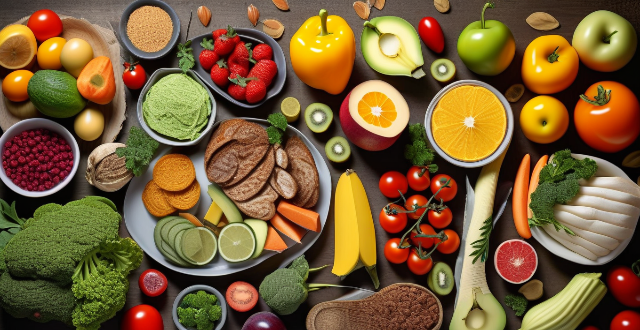
How do I incorporate more fruits and vegetables into my daily meals ?
Incorporating more fruits and vegetables into daily meals is crucial for a balanced diet, providing essential nutrients. To achieve this, start the day with fruit smoothies or salads, snack on vegetable sticks or fruit parings, include veggies in lunch and dinner through salads, stir-fries, and soups, and enjoy fruit-based desserts or healthy cookies. Plan ahead, prep fruits and vegetables in advance, and cook in bulk to simplify the process.
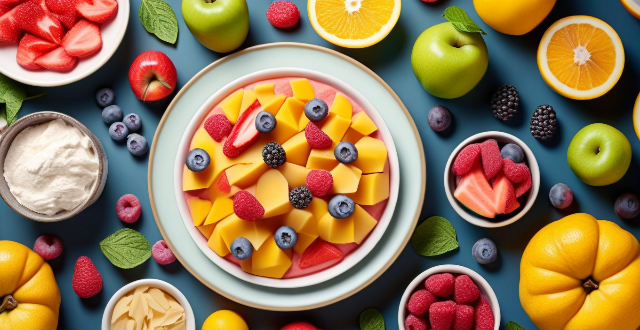
What are some creative ways to incorporate fruit into my breakfast ?
Incorporating fruits into your breakfast can add flavor, color, and nutrition to your morning meal. Here are some creative ideas: smoothie bowls with frozen fruits and topped with fresh fruits, nuts, seeds, and superfoods; fruit salad with a light honey-lime dressing served on its own or over leafy greens; pancakes and waffles mixed with mashed bananas or pureed berries and topped with fruit compote; oatmeal stirred in with diced apples, pears, or pomegranate seeds and drizzled with honey and cinnamon; toast toppings like cream cheese or peanut butter with sliced bananas or avocado slices sprinkled with hemp seeds; egg dishes like an egg white omelet filled with sautéed apples and cinnamon or a frittata made from diced tomatoes and bell peppers mixed with beaten eggs; and cereals and yogurt mixed with chopped fruits like blueberries or raspberries for a protein-packed breakfast.
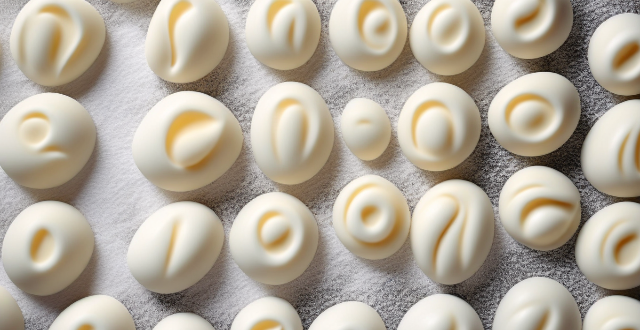
What are some unique ingredients commonly used in French desserts ?
French desserts are renowned for their exquisite taste and delicate textures, which are largely due to the unique ingredients used in their preparation. These include vanilla beans, almond meal, cream, butter, lemon zest, and kirsch. Each ingredient plays a crucial role in enhancing the flavor, aroma, and texture of French desserts. Understanding the importance and usage of these ingredients can help you appreciate the artistry behind French pastry making and even try your hand at creating your own delectable treats.
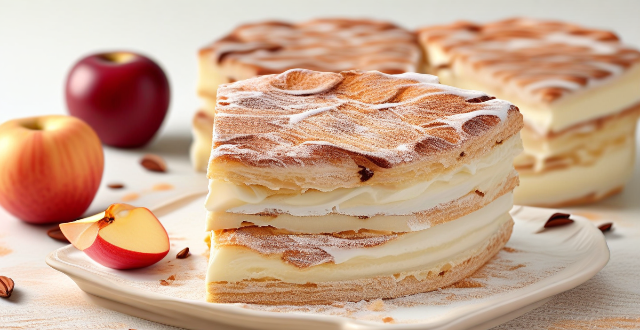
What are some tips for making vegan desserts that everyone will love ?
To make vegan desserts that everyone will love, consider these tips: use natural sweeteners like maple syrup and agave nectar for rich flavor; incorporate nut butters such as almond and cashew for creaminess; experiment with flours like almond and oat for baking; add spices and extracts like vanilla and cinnamon for depth of flavor; utilize fruits like apples and bananas for natural sweetness; use dairy substitutes like coconut milk and almond milk for creamy textures; get creative with chocolate by using vegan brands or carob; and focus on texture by adding nuts, seeds, and dried fruits. By following these guidelines, you can create desserts that are not only vegan but also deliciously satisfying.

Are there any low-calorie desserts that are also nutritious ?
There are several low-calorie desserts that are also nutritious, including fruit salad, yogurt parfait, chia seed pudding, chocolate avocado mousse, and frozen bananas. These options provide vitamins, antioxidants, protein, fiber, and healthy fats while keeping the calorie count low.

Can you suggest easy French dessert recipes for beginners ?
Easy French Dessert Recipes for Beginners French desserts are known for their elegance and flavor, but they can also be easy to make. Here are some simple French dessert recipes that even beginners can try: Tarte Tatin: - Ingredients: apples, sugar, butter, puff pastry - Steps: preheat oven, peel and core apples, melt butter and sprinkle sugar in skillet, cook apples until tender, caramelize syrup, roll out puff pastry, place over apples, bake until golden brown, cool and invert onto serving plate. Chocolate Mousse: - Ingredients: dark chocolate, eggs, sugar, heavy cream - Steps: melt chocolate, separate egg yolks and whites, beat yolks with sugar until pale and thick, beat whites until soft peaks form, fold melted chocolate into yolk mixture, fold in whites, whip cream until stiff peaks form, gently fold whipped cream into chocolate mixture, spoon into serving dishes and chill before serving. Crème Brûlée: - Ingredients: heavy cream, sugar (plus extra for topping), egg yolks, vanilla extract - Steps: preheat oven, heat cream and sugar until simmering, whisk egg yolks and sugar until combined, slowly pour hot cream into egg mixture while whisking constantly to prevent curdling, stir in vanilla extract, strain mixture through sieve into measuring cup or pitcher, pour into ramekins placed in baking dish with hot water halfway up sides of ramekins, bake until set but slightly jiggly in center, cool to room temperature then chill for at least 2 hours before serving; just before serving sprinkle each crème brûlée with thin layer of sugar and use kitchen torch to caramelize sugar until golden brown.

What kind of chocolate is typically used in French chocolate desserts ?
The article discusses the importance of chocolate selection in French chocolate desserts, highlighting the use of dark, milk, white, and unsweetened chocolate. It emphasizes the rich culinary heritage of France that demands quality ingredients, especially in chocolate desserts. The article also suggests considering the desired outcome of the dish, taste testing, and experimentation to find the perfect chocolate for a particular dessert.

What are the most popular festive foods around the world ?
The text discusses a variety of festive foods from different cultures around the world, including Christmas, Easter, Hanukkah, Eid al-Fitr, Diwali, Chinese New Year, and Halloween. Each section highlights traditional dishes associated with these holidays and their cultural significance, such as Turkey and Pumpkin Pie for Thanksgiving and Christmas in the United States, La Vigilia and Panettone in Italy, and Kabsa and Maamoul in Saudi Arabia. The text emphasizes how these foods bring people together, symbolize tradition, and create a sense of joy and community during celebrations.

How do French pastry chefs achieve such delicate textures in their desserts ?
French pastry chefs are renowned for their ability to create desserts with exquisite textures that melt in your mouth. Achieving such delicate results involves a combination of precise techniques, high-quality ingredients, and meticulous attention to detail. Here's a breakdown of the key factors: 1. Mastery of Basic Techniques 2. Use of High-Quality Ingredients 3. Precision Cooking Methods 4. Creative Combinations 5. Attention to Detail

What are the must-try foods and drinks in island destinations ?
When traveling to island destinations, it's essential to try the local cuisine and beverages. Here are some must-try foods and drinks in popular island destinations: In Hawaii, you can enjoy a poke bowl made with diced raw fish served over rice and topped with various vegetables and sauces. Shaved ice is a refreshing treat that can be found all over the islands. A Mai Tai is a classic cocktail made with rum, lime juice, orgeat syrup, and curaçao. In the Caribbean, jerk chicken is a spicy grilled chicken dish that originated in Jamaica. Rum punch is a popular drink made with rum, fruit juices, and spices. Conch fritters are a Bahamian specialty made from chopped conch meat mixed with flour, eggs, onions, and spices. In Bali, Indonesia, you can enjoy nasi goreng, an Indonesian fried rice dish often served as breakfast or lunch. Es campur is a refreshing dessert made with shaved ice, coconut milk, syrups, jellies, and various fruit toppings. Bintang beer is an Indonesian pilsner beer widely available throughout Bali.

Where can I enjoy haute cuisine in Hong Kong without breaking the bank ?
Hong Kong is a food lover's paradise, offering a wide range of culinary delights at various price points. Here are some budget-friendly options for enjoying haute cuisine in the city: 1. **Tim Ho Wan** - The World's Cheapest Michelin-starred Restaurant offers dim sum dishes like Baked Buns with BBQ Pork for HK$20-50 per dish. 2. **Yung Kee Restaurant** - Affordable Roast Goose is renowned for its crispy and juicy roast goose, with meals costing HK$100-200. 3. **Tai Ping Koon** - Budget-Friendly Seafood Restaurant serves fresh seafood dishes like steamed fish and shrimp with garlic for HK$50-100 per dish. 4. **Lan Fong Yuen** - No-frills Tea House with Reasonable Prices offers traditional Cantonese tea and snacks since 1956, with prices ranging from HK$20-40 per person. 5. **Kau Kee Restaurant** - Affordable Noodles and Congee is known for its beef brisket noodles and congee, with meals costing HK$30-50. 6. **Lin Heung Kuttay** - Cheap and Cheerful Desserts specializes in traditional Chinese desserts like mango pomelo sago soup and durian pudding, with prices ranging from HK$10-30 per dessert. These options prove that you don't have to spend a fortune to enjoy delicious food in Hong Kong.

What are some healthy lunch box ideas for kids ?
Here are some healthy lunch box ideas for kids: - Whole Grain Sandwiches: Whole grain bread or wraps provide complex carbohydrates and fiber. Fillings like lean turkey, chicken, or hummus offer protein and flavor. Add sliced veggies like cucumbers, tomatoes, and bell peppers for extra nutrients. - Fruit and Veggie Platters: Cut up a variety of fruits and vegetables such as apples, grapes, carrots, and cherry tomatoes. Include a low-fat dip like yogurt or hummus for added fun and taste. - Yogurt Parfaits: Layer plain Greek yogurt with granola and fresh berries for a delicious treat. This combination provides calcium, protein, and antioxidants. - Quinoa Salad: Cooked quinoa mixed with roasted veggies, chickpeas, and a simple vinaigrette. This salad offers plant-based protein and essential vitamins and minerals. - Homemade Pizza Rolls: Use whole wheat tortillas as the base and top with tomato sauce, cheese, and veggies. Bake until crispy for a fun twist on traditional pizza. - Egg Muffins: Whip up mini egg muffins using eggs, spinach, cheese, and diced tomatoes. These muffins are high in protein and easy to grab on the go. - Healthy Snacks: Pack individual servings of nuts, seeds, or dried fruit for an energy boost. Choose options that are low in sugar and sodium.
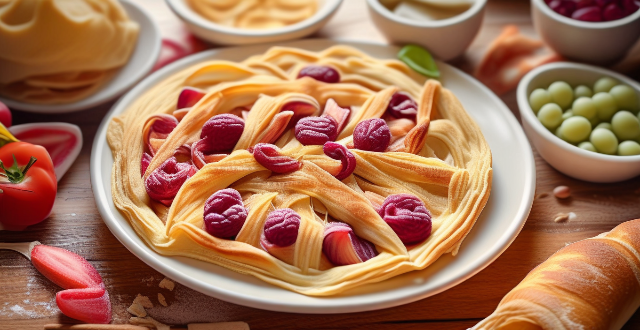
What are some quick and easy breakfast recipes for busy mornings ?
Quick and easy breakfast recipes for busy mornings include overnight oats, smoothie bowls, and avocado toast. Overnight oats are made by mixing rolled oats with milk or yogurt and toppings like nuts and dried fruit, then refrigerating overnight. Smoothie bowls are made by blending fruits and vegetables with liquids, then topping with nuts or granola. Avocado toast is made by mashing ripe avocado onto toasted bread and seasoning with salt and pepper.
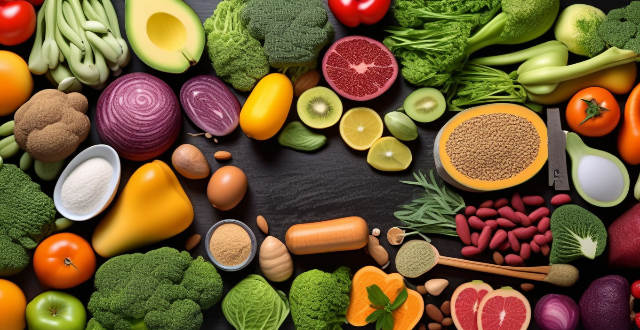
What are the key components of a healthy breakfast ?
A healthy breakfast should include a variety of nutrients to provide energy and support overall health. The key components are whole grains, protein, fruits and vegetables, healthy fats, and dairy or non-dairy alternatives. Whole grains provide complex carbohydrates, fiber, vitamins, and minerals. Protein is important for building and repairing tissues in the body. Fruits and vegetables provide essential vitamins, minerals, antioxidants, and fiber. Healthy fats are important for brain function and hormone regulation. Dairy products or non-dairy alternatives provide calcium, vitamin D, and other important nutrients. Simple combinations like oatmeal with nuts and fruit, a veggie omelette with whole wheat toast, or Greek yogurt with berries and granola can provide all the key components of a balanced breakfast.
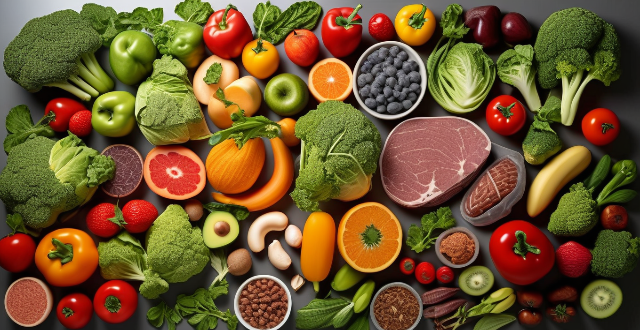
What is the ideal meal plan for an athlete's daily routine ?
An athlete's meal plan should include a variety of complex carbohydrates, lean proteins, healthy fats, and fruits & vegetables to support their training goals, optimize performance, and aid in recovery. The ideal meal plan includes breakfast with sustained energy sources like whole grains and fruits; snacks such as trail mix or protein shakes to keep energy levels steady; lunch focusing on lean proteins and leafy greens for muscle repair and nutrient replenishment; afternoon snacks like Greek yogurt or fruit smoothies to avoid energy crashes; dinner emphasizing lean proteins and complex carbs for muscle recovery and glycogen replenishment; and a pre-bed snack with slow-digesting protein and natural sleep aids like cherries or chamomile tea.
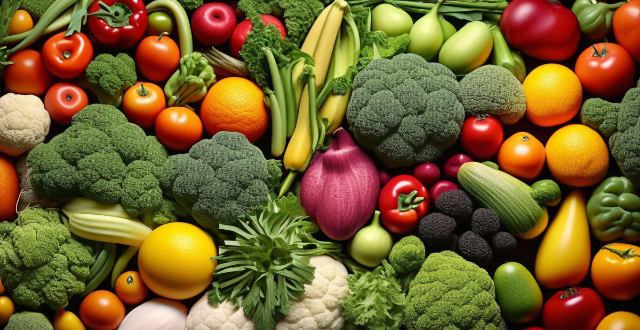
How can I make sure my fruits and vegetables are organic ?
To ensure your fruits and vegetables are organic, buyTo ensure your fruits and vegetables are organic, buy stores, grow your own using avoid contamination by washing produce thoroughly, and educate yourself on the latest research and news about organic farming.

What are some unique and delicious New Year's Eve snacks ?
New Year's Eve is a time for celebration and indulgence, and what better way to celebrate than with some unique and delicious snacks? Here are five ideas to get you started: 1. Fruit and Cheese Platter - Fresh fruits such as grapes, apples, and pears, assorted cheeses like Brie, Cheddar, and Gouda, crackers or bread for pairing. 2. Baked Brie En Croute - Wheel of Brie cheese, puff pastry sheet, egg wash (egg beaten with a bit of water), jam or preserves (optional). 3. Charcuterie Board - Assorted cured meats like salami, prosciutto, and chorizo, assorted olives and pickled vegetables, crackers or bread for pairing, mustard, hummus or other dips. 4. Shrimp Cocktail - Cooked shrimp, peeled and deveined, cocktail sauce or homemade dipping sauce, lemon wedges for garnish. 5. Chocolate Fondues - Assorted chocolate bars (milk, dark, white), assorted dippers like strawberries, marshmallows, and pretzels.
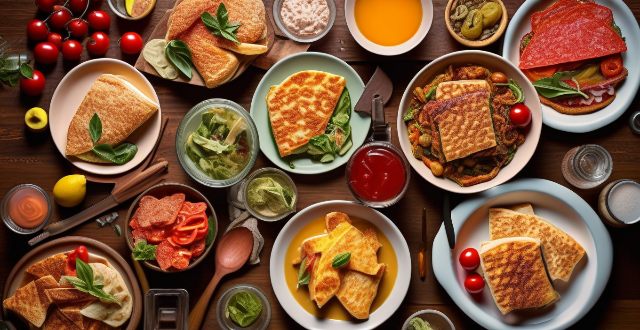
Can you suggest popular dishes that showcase genuine Mexican flavors ?
Mexico's vibrant cuisine blends indigenous ingredients and Spanish cooking techniques. Popular dishes include a variety of tacos, enchiladas, chiles rellenos, quesadillas, authentic soups and broths, antojitos (snacks), street food, and beverages like horchata and agua fresca. These dishes showcase genuine Mexican flavors and the country's rich culinary heritage.

How do I pair cocktails with food for optimal taste experiences ?
Pairing cocktails with food can elevate your dining experience to a whole new level. Here are some tips on how to do it right: 1. Consider the flavor profile of your food. For bold and spicy dishes, you might want to consider cocktails that can stand up to the strong flavors, such as Margarita or Mojito. For lighter dishes, opt for a cocktail that won't overpower the subtleties of the food, like Champagne Cocktail or Whiskey Sour. 2. Match intensity. If you're having light bites or snacks, opt for lower-alcohol cocktails that won't weigh you down, such as Sherry Cobbler or Gin Fizz. For more substantial meals, you might want something with a bit more oomph, like Old Fashioned or Negroni. 3. Think about sweetness. For dessert courses, you'll want a cocktail that can match the sweetness, such as Pina Colada or White Russian. For savory dishes, avoid overly sweet cocktails that might clash, like Daiquiri or Cosmopolitan. 4. Don't forget about acidity. For dishes with a lot of acidity, like lemon-based sauces or vinegar dressings, you might want a cocktail that can stand up to it, such as Woo Woo or Kir Royale. For rich, creamy dishes, a touch of acidity in your cocktail can help cut through the heaviness, like Martini or Bramble. 5. Experiment and have fun! The most important thing is to find what you enjoy. There are no hard-and-fast rules, so don't be afraid to try something new. The best pairing is the one that brings you the most pleasure!